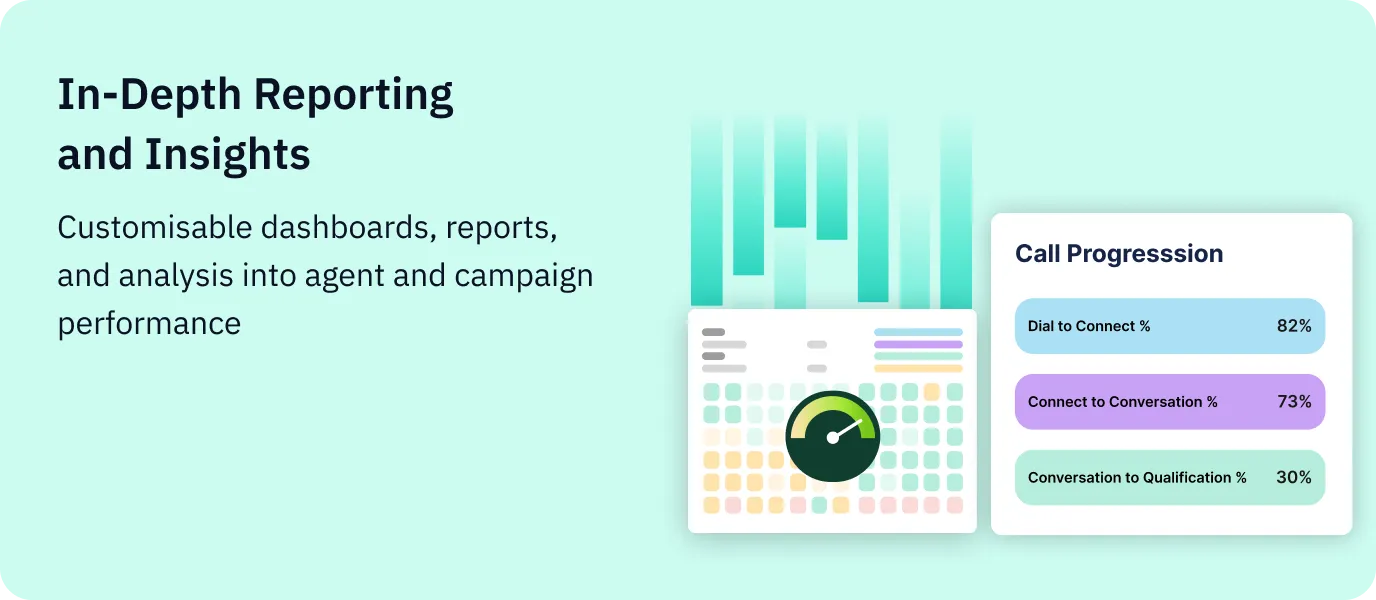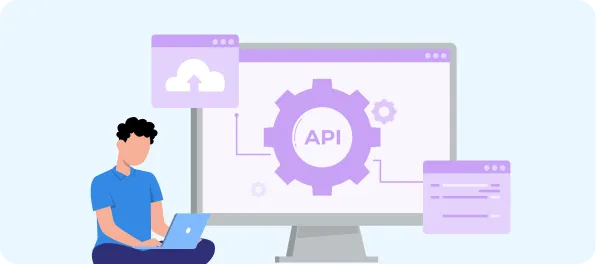Explore the benefits, essential skills, and strategies for success in telemarketing
Telemarketing is a method of direct communication where companies reach their target audience through telephone calls, including cold calling. The primary goal is to advertise products or services and generate interest to attract new consumers.Lead data is gathered from diverse sources, including marketing campaigns, surveys, online purchases, and other online channels.
Agents and businesses then utilize this data and initiate campaigns to target individuals interested in the business's offerings.
In inbound telemarketing, customers contact the business for information. They find business details through ads, social media, emails, or websites, then connect using the provided contact information. Agents offer support during calls, assisting with inquiries or feedback. The focus here is on providing assistance and gathering insights
.
Read More

Outbound telemarketing involves businesses contacting customers directly to promote products or services, generate leads, conduct research, or schedule appointments. Agents aim to generate sales by presenting offers and creating interest. They also have to maintain a conversational tone to avoid sounding spammy, as customers can quickly detect insincerity and may take measures to block future communication.
Read more

In B2B telemarketing, the focus is on engaging decision-makers through personalized approaches, leading to high ROI, especially in lead generation. However, not all businesses adopt B2B telemarketing due to the need for a focused strategy, requiring a well-defined buyer persona and a strong brand to attract attention.
Read more
-p-2000.webp)
B2C Outbound refers to the process of businesses reaching out to individual customers directly. Closing deals with individuals is often simpler as there are fewer stakeholders involved. Sales reps can easily identify potential leads and track their progress using CRM systems. Additionally, reaching out to leads is made easier through omnichannel communication.

Define
Real-time connectivity: It is a real-time process where you connect through calls. Telemarketers understand customers profoundly and try their best to establish a connection.
Distinction
Personalized interactions: It helps in creating personalized interactions by answering questions and promptly solving queries. This personalization enhances the customer experience
Example
Real-time feedback: This live call operation gives real-time feedback for improvement, assisting in understanding customer expectations and enhancing customer experience.
Example
Measurable metrics: Key performance indicators help measure the performance of campaigns. Average talk time, conversation rates, return on investments, etc., are estimated to generate data on progress
Example
Lead Generation: It is the best way to generate leads for the business. You can outsource your telemarketing services and generate qualified leads.
Define
Compliance issues: Telemarketing service providers are at risk of non-compliance. They must comply and adhere to the regulations and laws imposed by the country/industries where they operate.
Distinction
Negative perceptions and resentment: There is growing resentment towards telemarketers, who keep calling at unconventional times and in strange situations. Sometimes, they are even compared with scammers.
Example
Mis-communication: Real-time communication may lead to better communication. Due to the unwelcoming nature of calls, individuals might need to understand the objective, or the telecaller might get stuck due to unpreparedness.
Example
Time-consuming: Outbound telemarketing requires consistent reaching out to leads irrespective of facing rejections. This consumes a lot of time and drains energy.
Example
Rejections: Telecalling agents consistently face rejections, lowering their morale. This may lead to low self-esteem issues and a high attrition rate.
CRM software facilitates customer interactions, lead tracking, and communication management. It stores customer contact information, monitors interactions, and offers insights into customer behavior. CRM systems streamline business operations by centralizing interactions, providing necessary insights, and consolidating data.
Read more

In outbound call center services in India, the sales rep reaches out to leads for the lead generation process, which helps bring sales opportunities and increase revenue for the business. Apart from this, outbound is used to take feedback, conduct surveys, and provide proactive assistance to the company.

Call analysis software evaluates telemarketing calls made during marketing campaigns, offering insights into call quality, customer interactions, and campaign performance. It ensures adherence to call standards and highlights areas for improvement, thus optimizing agent performance and maintaining call quality standards.
Read more

Dialer software automates dialing processes, connecting agents seamlessly with customers. Reducing idle time between calls and enhances efficiency and productivity in telemarketing campaigns. Dialer software streamlines operations, allowing agents to focus on engaging with leads rather than manual dialing.
Read more

It utilizes voice and keyboard inputs to interact with callers, directing them to the appropriate department or agent. IVR systems optimize call-handling processes by automating responses and streamlining call routing. Their efficiency enables businesses to connect with a broader audience in less time, enhancing overall customer experience.
Read more

Scope
Goal
Approach
Timing
Customer interaction
Define
Involves a broader range of activities beyond selling. It includes market research, lead generation, appointment setting, and customer service.
Distinction
It aims to build relationships, create awareness, and generate interest in products and services. It may only sometimes result in immediate sales.
Example
Telemarketing services often go with a softer approach and stress building a rapport and providing essential information to the prospect.
Example
It can be more long-term and time-consuming than telesales, as it may involve nurturing leads until they are ready to purchase.
Example
Telemarketing focuses on building relationships and engaging with customers apart from selling.
Define
Telesales focuses particularly on selling products or services over the phone call.
Distinction
Primarily focuses on closing deals and generating revenue.
Example
Generally, telesales use a more direct and persuasive tone to close a sale during a call.
Example
It is a short-term process that aims for immediate results and focuses on closing deals during a call.
Example
It only focuses on the sales aspect of the interaction, aiming to close a deal quickly during the call.
Lead management is integral to business operations and essential for effectively managing leads and maximizing conversion rates. A well-implemented system streamlines identifying and nurturing leads, ensuring that businesses can prioritize resources and focus on the most promising prospects. By leveraging strategies, companies can efficiently handle leads from various sources, improving efficiency and enhancing communication between sales and marketing teams.
With the best lead management software, companies can target priority leads efficiently and make sure everything runs smoothly. Identifying at what step of the sales funnel the leads are getting dropped is a crucial indicator of the problems arising in sales processes. By identifying these problems, companies can work towards finding solutions and manage leads effectively.
Inbound telemarketing involves customers contacting the business for information or assistance, while outbound telemarketing entails businesses reaching out to customers directly to promote products or services, generate leads, or conduct research.
Compliance with telemarketing regulations, such as the Telecom Commercial Communications Customer Preference Regulations (TCCCPR) in India, is crucial to avoid penalties and legal consequences. It ensures that telemarketers respect customers' preferences and privacy rights.
Essential skills for telemarketing success include effective communication, sales proficiency, resilience in the face of rejection, time management, deep product knowledge, and adaptability to various situations.
Businesses can measure the success of their telemarketing campaigns by tracking metrics such as cost per contact, average answering speed, customer satisfaction score (CSAT), abandoned call rate, and service level. These metrics provide insights into campaign effectiveness and customer engagement.
Yes, cold calling remains an effective strategy in telemarketing campaigns. While it may encounter challenges like rejection, it enables direct engagement with potential customers, leading to tailored responses and increased chances of success. Proper training and objection-handling techniques can enhance the effectiveness of cold-calling efforts.